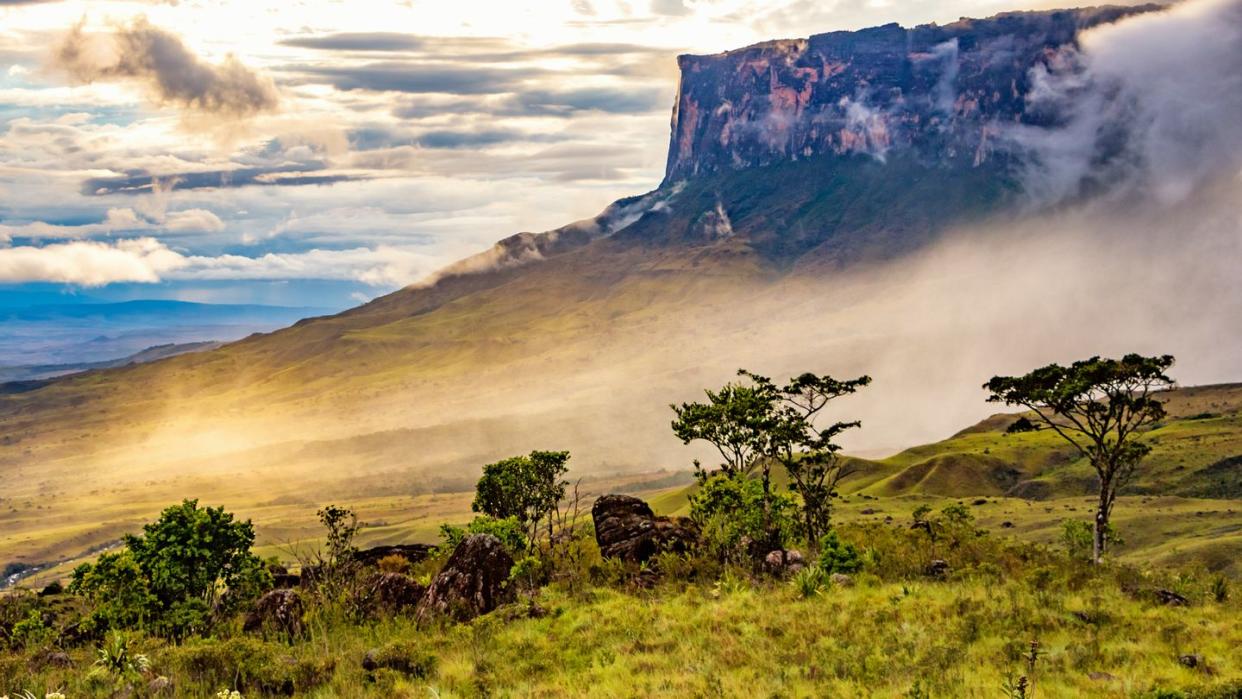Archaeologists Found a Stunning Ancient Rock That May Reveal a Lost Civilization

Rock art found in southeastern Venezuela may have come from a previously unknown culture.
Researchers believe that the roughly 4,000-year-old art signifies a central dispersion point from which cultures spread throughout the region.
Further searches of the area could produce additional art formations.
Tucked in a mountainous region of southeastern Venezuela, newly discovered ancient rock art may be the work of a previously unknown group of people.
Strewn across isolated boulders within Canaima National Park (home to Angel Falls, the world’s tallest uninterrupted waterfall) the research team discovered 20 rock art sites that show how the area was possibly used by indigenous hunter-gatherers—either as a shelter or as a place for enacting ritual activities. Maybe both.
The team, led by Jose Miguel Pérez-Gómez, published their findings in Rock Art Research last year, and presented the findings at a conference in Italy this summer. They aimed to explore both the art and its connection to people groups across the region.
“Preliminary stylistic analysis suggests possible regional interrelationships of the pictograms with other rock art sites,” the study authors wrote. That connection could provide an entirely fresh perspective on people groups, including—according to Live Science—what Pérez-Gómez believes is the discovery of “a new culture previously unknown.”
The art itself— painted in a distinct red ochre, which may have “come from a mineral anomaly close to the site,” according to the study—features pictograms of geometric designs, nature, and people. The geometric patterns include everything from lines of dots to rows of Xs to star-shaped patterns. These mix with more basic depictions of stick-figure people and leaves.
The authors believe that the pictograms and petroglyphs could contribute to a broader understanding of the sociocultural context in which the people living in the remote area of northern South America would have existed, and could offer clues about how people spread through the region.
With the park covering over 11,000 square miles, the research team expects they will find even more art to add to the mix. But this find has been plenty exciting on its own. “This is relevant not only for Venezuela but points at a cultural and ethnic richness that will enhance, worldwide, how we think about the region,” Pérez-Gómez told Axios.
For now, the team isn’t sure why the people created the art or even what people group it was. “It is almost impossible,” Pérez-Gómez said, “to get into the minds of people living so many [thousands of] years ago.” Live Science reports that similar art in Brazil was dated to about 4,000 years ago, but the team believes the Venezuelan site could be even older.
The researcher’s favorite theory regarding the art is that the park would have served as a central site from which people later dispersed and spread across South America. Additional artifacts of ceramics and stone tools located near the rock art may help date the discovery, and give additional insight into the potentially unknown people group behind the artwork.
You Might Also Like

